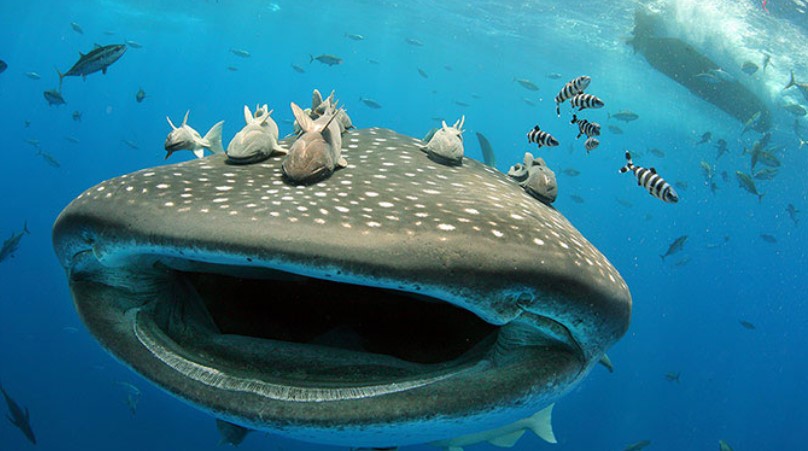Mechanism of food filtration
Like white whales, whale sharks do not have sharp teeth. Their food filtering mechanism is extremely special in the animal world. When detecting plankton, small crustaceans, mollusks or even small fishes, whale sharks often swim towards them, Open their mouths and suck in a huge body of water, pushing them into the food bag. Eat then close your mouth. These tiny organisms will be blocked through the filter horns, the water is pushed out. That is the technique of “Cross Current Filtering” on whale sharks.

Characteristics
The head of the whale shark is flat, the face is gray to brown with white spots between the horizontal stripes and the belly is white. Possessing a crescent-shaped tail, two pairs of dorsal and pectoral fins, a skin about 10cm thick and a massive body that makes their average speed only about 5km/h.

Whale sharks/Whale sharks usually prefer warm waters, so they are common in all tropical seas. They move each spring to the continental shelves of the west coast of Australia. However, the current number of whale sharks remains the challenge of oceanographers.
Despite being a fairly gentle and friendly fish, the whale shark is always classified as Vulnerable on the Red List because of over-hunting in Asia, especially the Philippines.
Some interesting facts about Whale/Whale Sharks you may not know:
– Whale sharks are one of three shark species that have a mechanism to filter food through the membrane horn
– A whale shark can be as long as a bus and weigh up to 22 tons
– The whale shark is the largest fish in the class of sharks, rays and is one of the largest living fish in the world.






